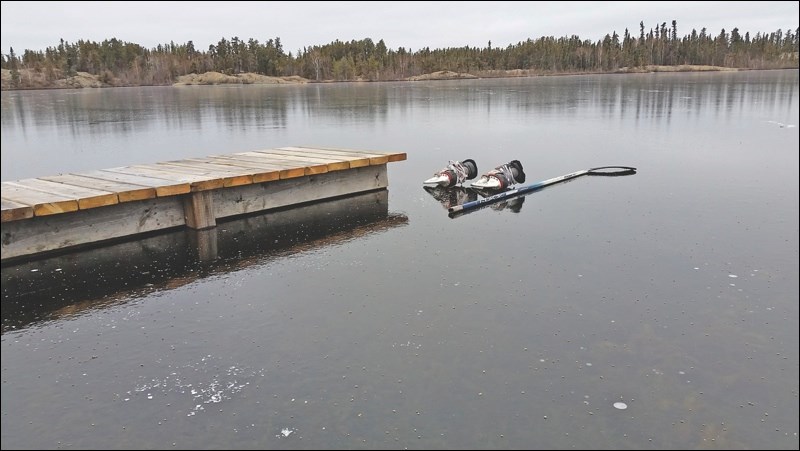While the vast ice-covered lakes – and the bounty of fish beneath the surface – are beckoning, outdoor enthusiasts should be extra vigilant about ice safety this year.
“We don’t recommend ice travel on the big lakes right now,” said Elliott Hrychuk, a Manitoba Conservation officer based in Flin Flon.
Hrychuk pointed to the warmer weather this season, combined with heavy snow this week, as particular reasons for caution on local lakes.
His warning echoes comments made by Flin Flon mayor Cal Huntley at the Dec. 1 city council meeting.
“It’s a really good idea to stay off the ice,” Huntley said. “It’s going to be a long time and some cold weather before anybody should be trekking around there or snowmobiling or anything like that.”
Huntley said there had been “close calls” in neighbouring communities, though he didn’t go into detail on these events.
While weather forecasts predict temperatures will soon be dropping in the Flin Flon area, colder weather doesn’t necessarily translate into safe conditions.
According to the Lifesaving Society, “A sudden drop in air temperature, which is actually more dangerous than a sudden rise, can create cracks in the ice.”
Before venturing out on the ice on foot or in a vehicle, it is recommended to check ice thickness, usually using a hand drill or auger, and take safety precautions (see sidebar).
The Canadian Red Cross offers the following guidelines for ice safety:
Ice thickness should be 15 cm, or approximately six inches, for an individual walking or skating. For skating parties or games, ice thickness should be 20 cm, or approximately eight inches. A depth of 25 cm, 10 inches, is recommended for snowmobiles.
Factors affecting ice thickness can include the type of water, location, time of year and other environmental factors such as water depth and size of body of water; currents, tides and other moving water; the presence of chemicals including salt; fluctuations in water levels; logs, rocks and docks that absorb heat from the sun; changing air temperature; and shockwaves from vehicles travelling on the ice.
The colour of ice may be an indication of its strength. Clear blue ice is strongest.
White opaque or snow ice is half as strong as blue ice. Opaque ice is formed by wet snow freezing on the ice. Grey ice is unsafe. The grayness indicates the presence of water.
To learn more about local conditions, contact regional conservation officers in Manitoba at 204-687-1640 or in Saskatchewan at 306-688-8812.
Ice safety tips
These tips were adapted from the Canadian Red Cross and the Lifesaving Society websites. Visit www.redcross.ca or www.lifesavingsociety.com for more winter safety tips, including ice rescue methods.
• Check with local authorities before heading out.
• Avoid going out on ice at night.
• Keep away from unfamiliar paths or unknown ice.
• No ice is without risk. Even thick ice may be weak so be sure to measure clear hard ice in several places. The quality and thickness of ice can change very quickly and its appearance can be misleading.
• Avoid slushy ice, thawed ice that has recently refrozen, layered or rotten ice caused by sudden temperature changes, and ice near moving water such as rivers or currents.
• Never go on the ice alone. A buddy may be able to rescue you or go for help if you get into difficulty.
• Before you leave shore, inform someone of your destination and expected time of return.




